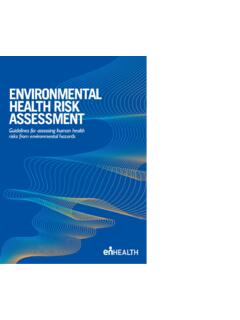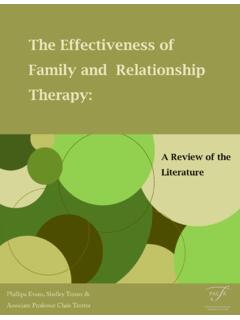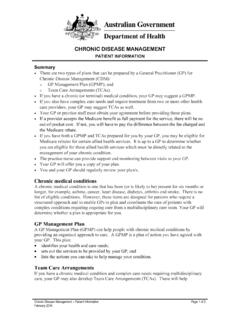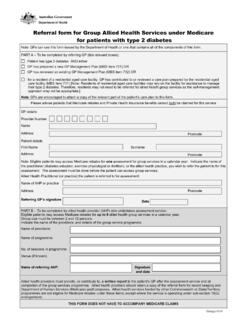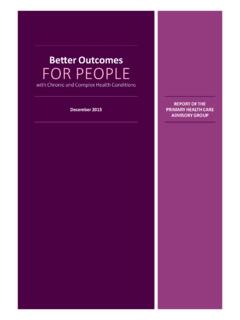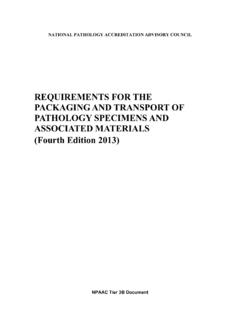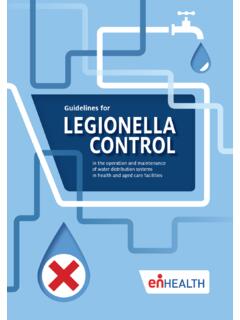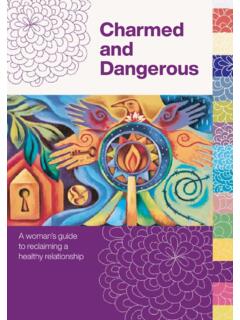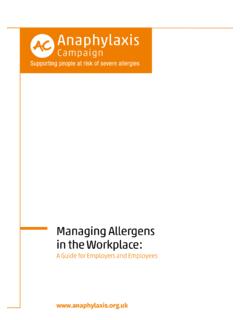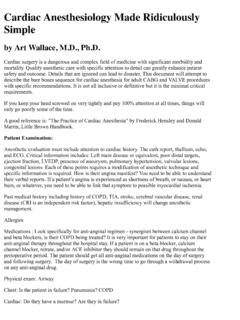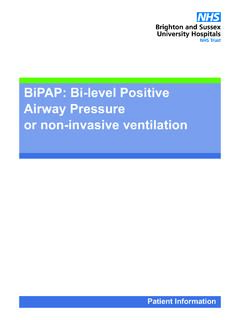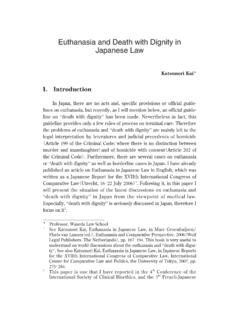Transcription of EMERGENCY TRIAGE EDUCATION KIT TRIAGE QUICK …
1 TRIAGE EDUCATION KIT TRIAGE QUICK REFERENCE GUIDE TRIAGE MethodRecommended TRIAGE Method Assess the following: Chief complaint General Appearance Airway Breathing CirculationYesNo 1 2 3 4 5 2 6 7 Disability Environment Limited History Co-morbiditiesPatient presents for TRIAGE ~ Safety hazards are considered above allDifferentiate predictors of poor outcome from other data collected during the TRIAGE assessmentIdentify patients who have evidence of or are at high risk of physiological instabilityQuick Evaluation ~ Is patient stable?Assign an appropriate ATS category in re-sponse to clinical assessment dataAllocate staff to patient, including brief handover to allocated staff member/sED model of care proceedsATS CategoriesATS categories for treatment acuity and performance thresholdsATS categoryTreatment acuity(maximum waiting time)Performanceindicator (%)1 Immediate100210 minutes80330 minutes75460 minutes705120 minutes70 Assessment of PainValidated Methods for quantitative assessment of painVisual analogue scale.
2 100 mm line (Nelson, Cohen, Lander, et al, 2004) Use a 100 mm line as shown below. Ask the patient to mark their level of pain on the : Australasian College of EMERGENCY MedicineApplication of a TRIAGE categoryDescriptive terms to guide acuity for the ATS and validated methods for quantitative assessment of pain0 No pain 10 Severe painDescriptorATS categoryVery severe 2 Moderately severe 3 Moderate 4 Minimal 5 Pain Scale AbbeyAdd scores for 1 6 and record here Total Pain ScoreNow tick the box that matches the Total Pain ScoreFinally.
3 Tick the box which matches the type of painAbbey Pain ScaleFor measurement of pain in people who cannot verbaliseHow to use scale: While observing the patients, score questions 1 to 6Q1. Vocalisation eg: whimpering, groaning, cryingAbsent 0 Mild 1 Moderate 2 Severe 3Q2. Facial expressioneg: looking tense, frowning, grimacing, looking frightenedAbsent 0 Mild 1 Moderate 2 Severe 3Q3. Change in body languageeg: fidgeting, rocking, guarding part of body, withdrawnAbsent 0 Mild 1 Moderate 2 Severe 3Q4. Behavioural changeeg: increased confusion, refusting to eat, alteration in usual patternsAbsent 0 Mild 1 Moderate 2 Severe 3Q5.
4 Physiological changeeg: temperature, pulse or blood pressure outside normal limits, perspiring, flushing or pallorAbsent 0 Mild 1 Moderate 2 Severe 3Q6. Physical changeseg: skin tears, pressure areas, arthritis, contractures, previous injuriesAbsent 0 Mild 1 Moderate 2 Severe 30 2No pain3 7 Mild8 13 Moderate14+SevereChronicAcuteAcute on ChronicReference: Jennifer Abbey, Neil Piller, AnitaDe Bellis, Adrian Esterman, Deborah Parker, Lynne Giles and Belinda Lowcay (2004) The Abbey pain scale: a 1-minute numerical indicator for people with end-stage dementia, International Journal of Palliative Nursing, Vol 10, No 6-13.
5 Pain Scale FLACC012 FaceNo particular expression or smileOccassional grimace or frown, withdrawn, disinterestedFrequent to constant quivering chin, clenched jawLegsNormal position or relaxedUneasy, restless, tenseKicking, or legs drawn upActivityLying quietly, normal position, moves easilySquirming, shifting, back and forth, tenseArched, rigid or jerkingCryNo cry (awake or asleep)Moans or whimpers; occasional complaintCrying steadily, screams, sobs, frequent complaintsConsolabilityContent, relaxedReassured by touching, hugging or being talked to, distractibleDifficult to console or comfortFLACC Behavioural Pain ScaleReference: Merkel S, Voepel-Lewis T, Shayevitz JR, et al: The FLACC: A behavioural scale for scoring postoperative pain in young children.
6 Pediatric Nursing 1997; 23:293-797 Printed with permission 2002, The Regents of the University of MichiganInstructionsPatients who are awake: Observe for at least 2-5 minutes. Observe legs and body uncovered. Reposition patient or observe activity, assess body for tenseness and tone. Initiate consoling interventions if needed. Patients who are asleep: Observe for at least 5 minutes or longer. Observe body and legs uncovered. If possible reposition the patient. Touch the body and assess for tenseness and tone. Each category is scored on the 0-2 scale which results in a total score of 0-10 Assessment of Behavioral Score: = Relaxed and comfortable = Mild discomfort = Moderate pain = Severe discomfort/pain 0 1-3 4-6 7-10 Wong-Baker FACES Pain rating scaleDeveloped for young patients to communicate how much pain they are to the child that each face is for a person who feels happy because he has no pain (hurt) or sad because he has some or a lot of pain.
7 Face 0 is very happy because he doesn t hurt at 1 hurts just a little 2 hurts a little 3 hurts even 4 hurts a whole lot 5 hurts as much as you can imagine, although you do not have to be crying to feel this bad. Ask the child to choose the face that best describes how he/she is feeling. Reference: Hockenberry MJ, Wilson D, Winkelstein ML: Wong s Essentials of Pediatric Nursing, ed. 7, St. Louis, 2005, p. 1259. Used with permission. Copyright, Mosby. 0NO HURT1 HURTSLITTLE BIT2 HURTSLITTLEMORE3 HURTSEVENMORE4 HURTSWHOLELOT5 HURTSWORSTPain Scale Wong-BakerObstetrics The ABCs of obstetricsUrgencyUrgency IndicatorReason for cautionAirway Any potential compromise Increased nasal congestion Often difficult intubations due to.
8 Increased patient size difficulty with patient positioning different induction agents required Increased vascularity of nose and airways causes difficulty in breathingBreathing Asthma Progesterone may be responsible for increased drive to breathe One third of pregnant asthmatic women experience a deterioration in their conditionCirculation Palpitations Headache Sudden drop in BP Symptoms of pulmonary embolus Progesterone causes widespread vasodilatation Oestrogen may contribute to increases in blood volume Diastolic BP 6 17mmHg BP lowest during second trimester Cardiac output (CO) by 30 50% Hyperdynamic flow High volume and dynamic flow may cause cerebral heamorrhage, especially subarachnoid haemorrhage (SAH) during pregnancy Sudden and serious deterioration of their condition Changes in coagulation system associated with pregnancy The ABCs of obstetrics (continued)Points to remember Hyperdynamic physiological changes occur as early as 6 8 weeks gestation.
9 An assessment of urgency must be made on the basis of both the woman and the foetus. An elevated BP is an ominous sign: the higher the BP the more urgent the review. At 20 weeks the weight of the uterus compresses the inferior vena cava if the woman is lying on her back a compromise to foetal wellbeing. The risk of many conditions is higher in pregnant women than non-pregnant women of childbearing age. These conditions include: cerebral haemorrhage or cerebral thrombosis severe pneumonia atrial arrythmias venous thrombosis cholelithiasis pyelonephritis spontaneous arterial dissections, splenic and subclavian dissections, with no previous medical history.
10 Domestic violence is more prevalent during pregnancy. This can mean increased complications for mother and adverse neonatal outcomes. In the setting of trauma, maternal signs may remain stable even when loss of one-third of blood volume may have occurred. The best initial treatment for the foetus is the optimum resuscitation of the mother. Assessment of dehydration levels in infantsSigns SeverityMild Moderate SevereGeneral conditionThirsty, restless, agitatedThirsty, restless, irritableWithdrawn, somnolent or comatose; rapid deep breathingPulseNormalRapid, weakRapid, weakAnterior fontanelleNormalSunkenVery sunkenEyesNormalSunkenVery sunkenTearsPresentAbsentAbsentMucous membranesSlightly dryDryDrySkin turgorNormalDecreasedDecreased with tentingUrineNormalReduced, concentratedNone for several hoursWeight loss4 5%6 9%>10%Source: Health Information for International Travel.

